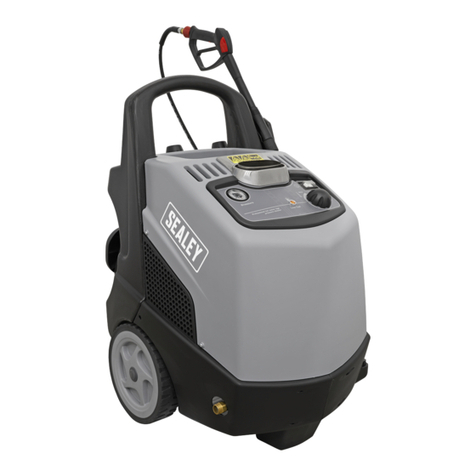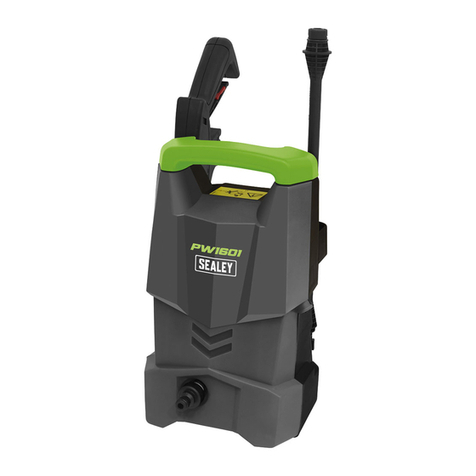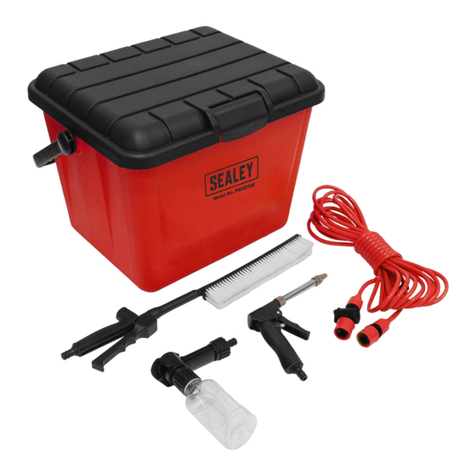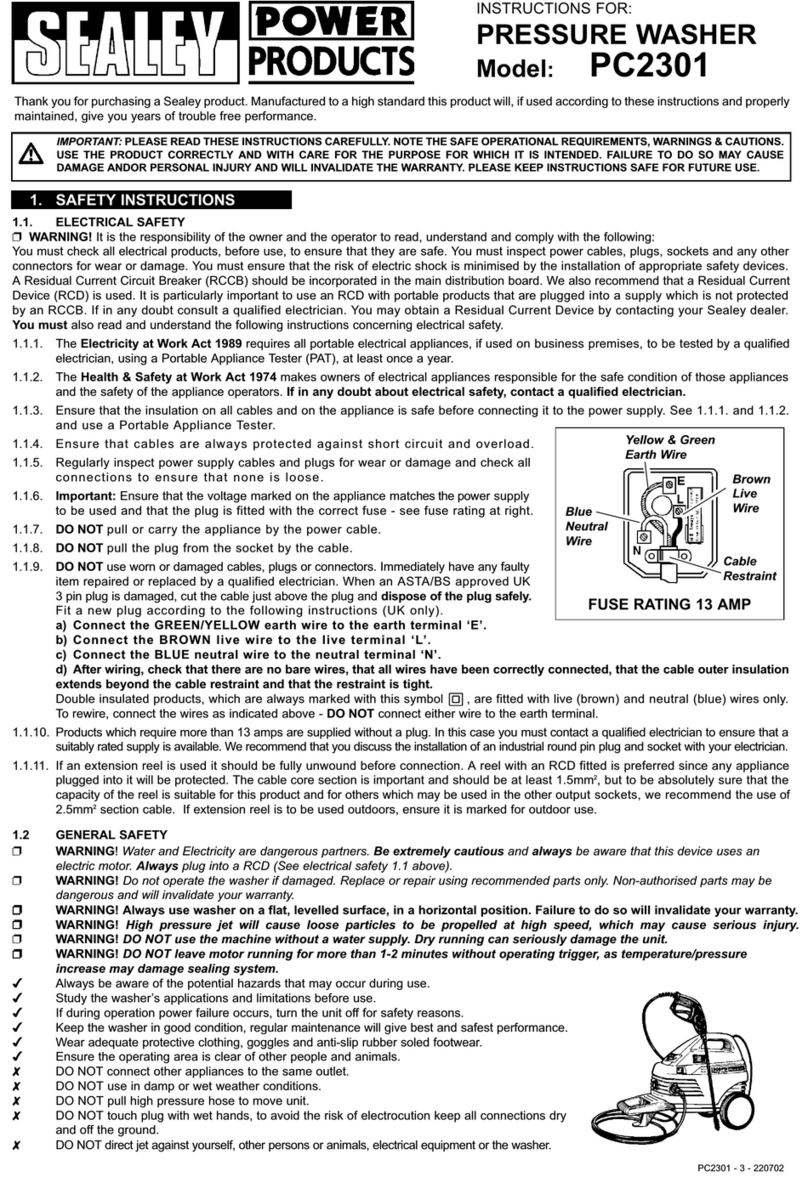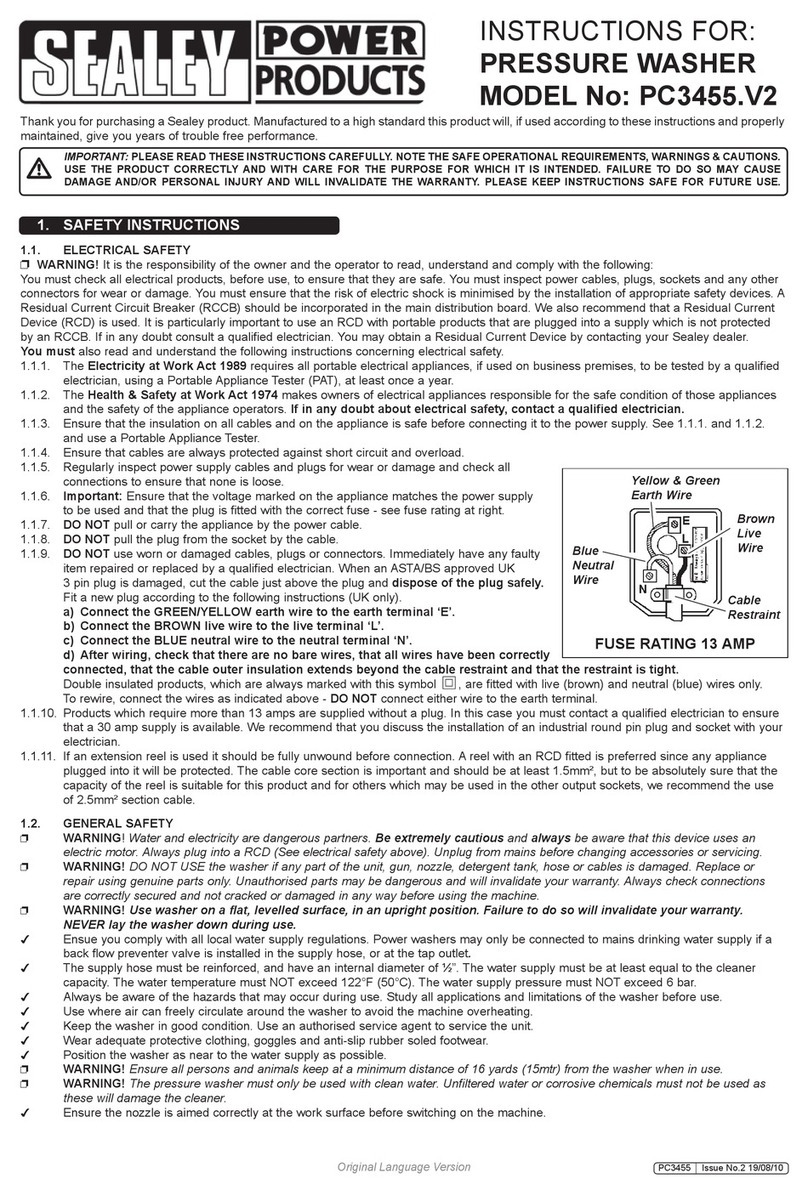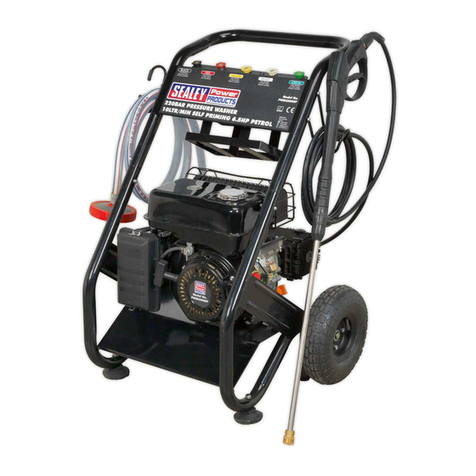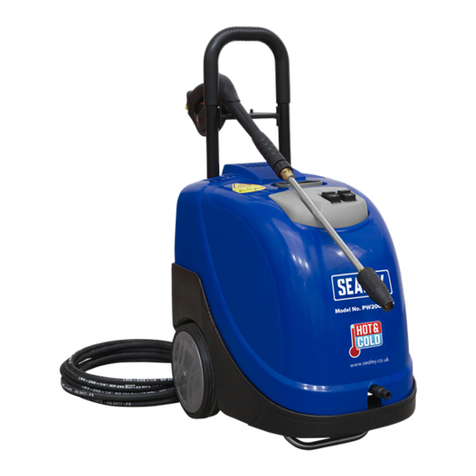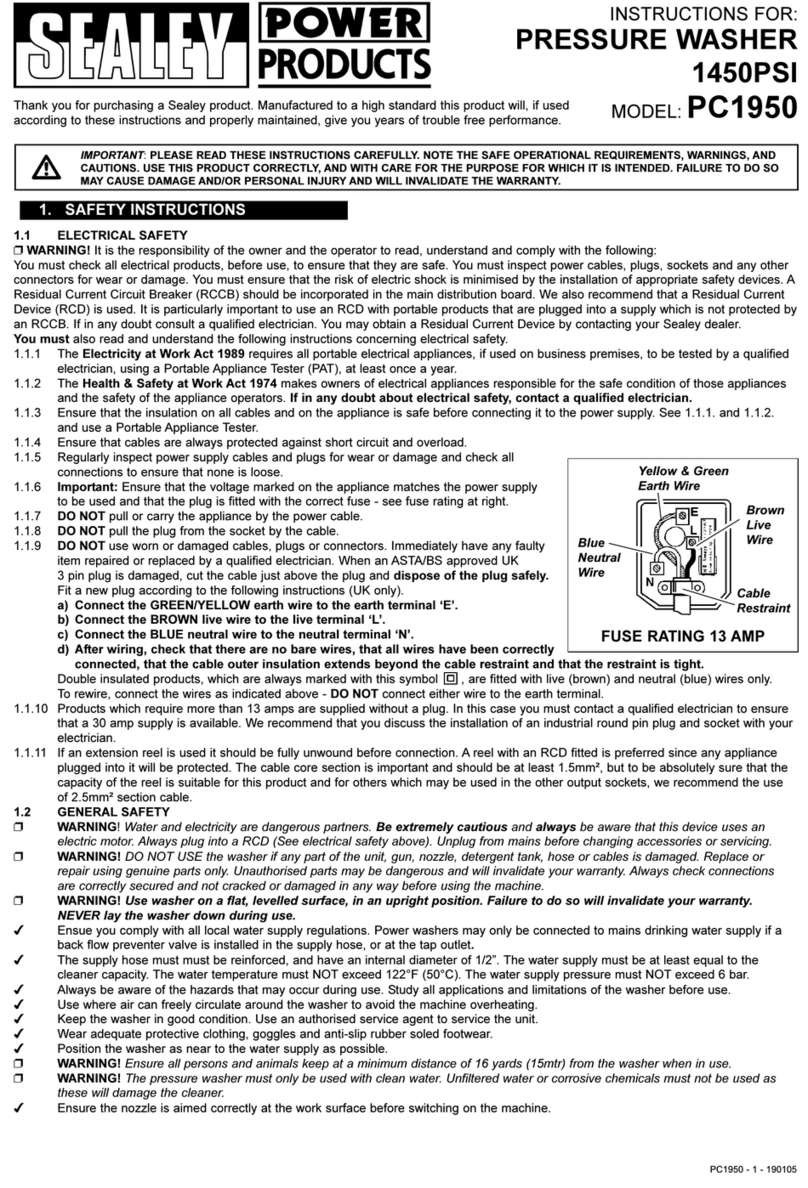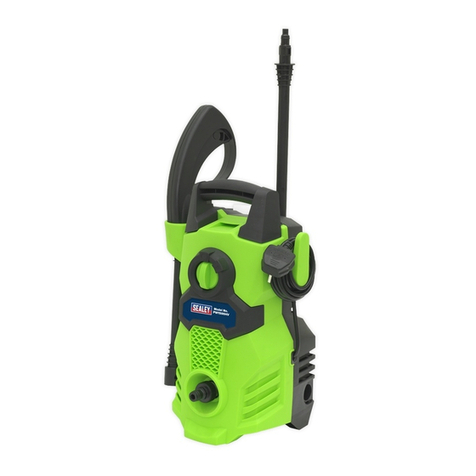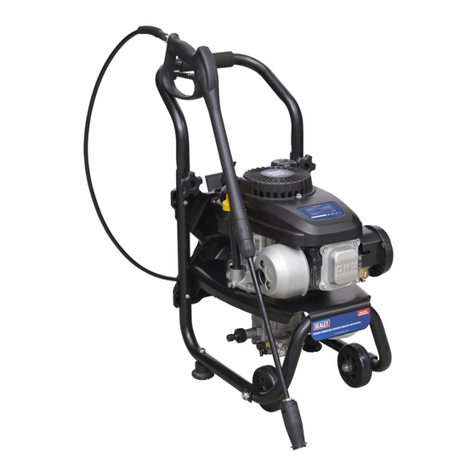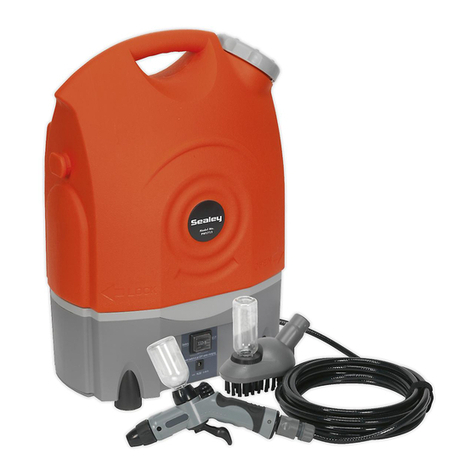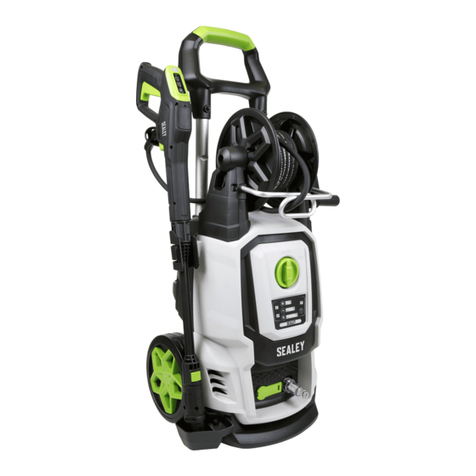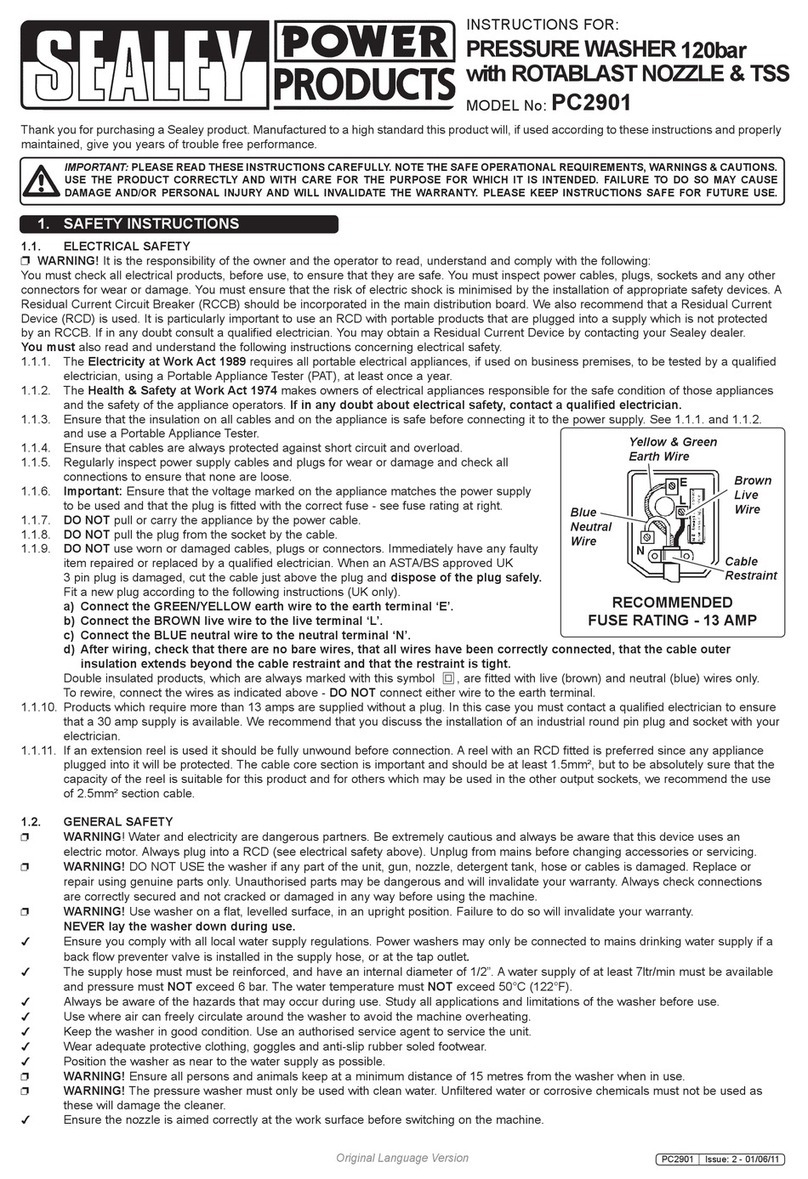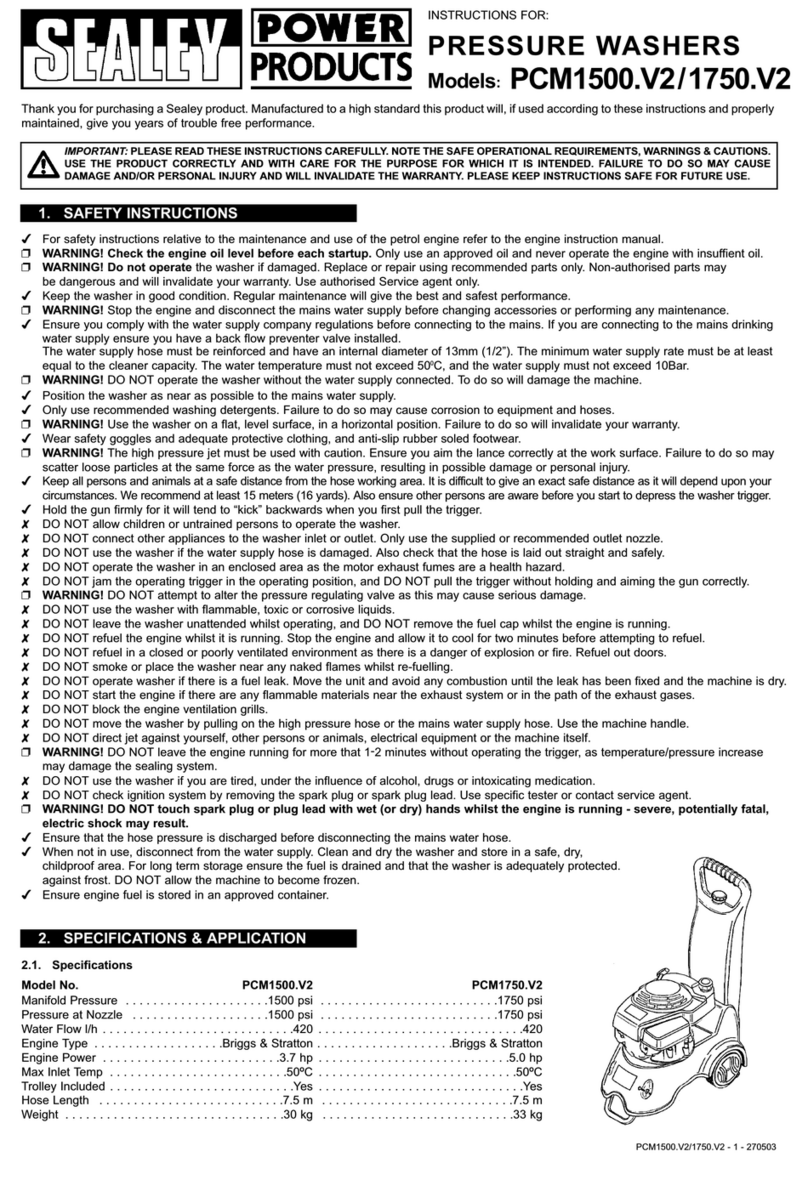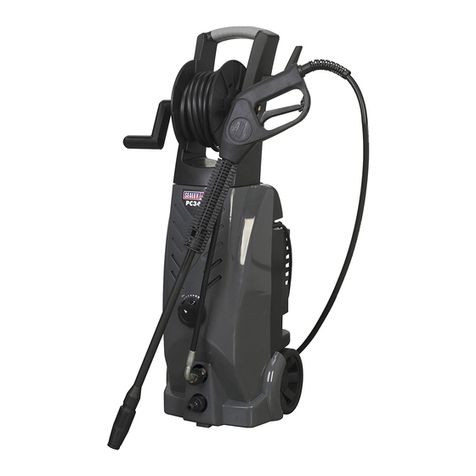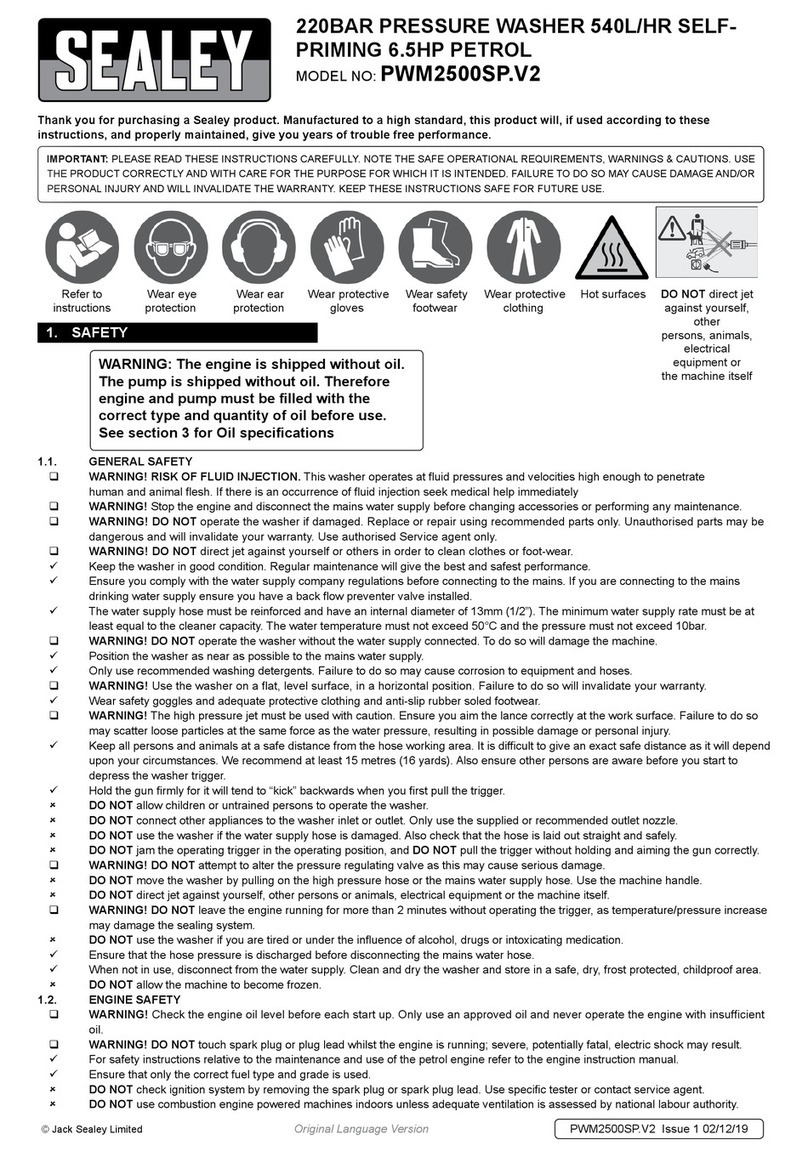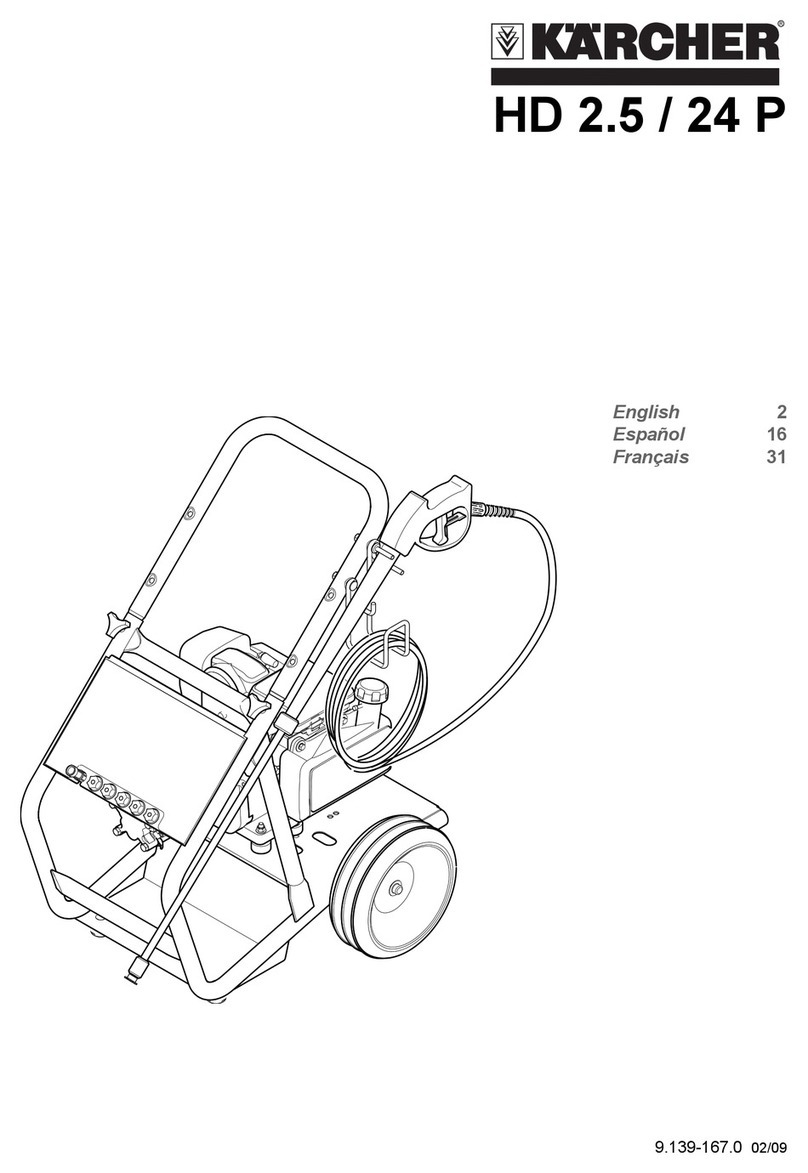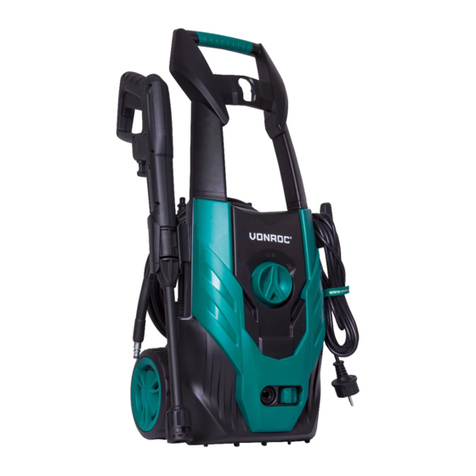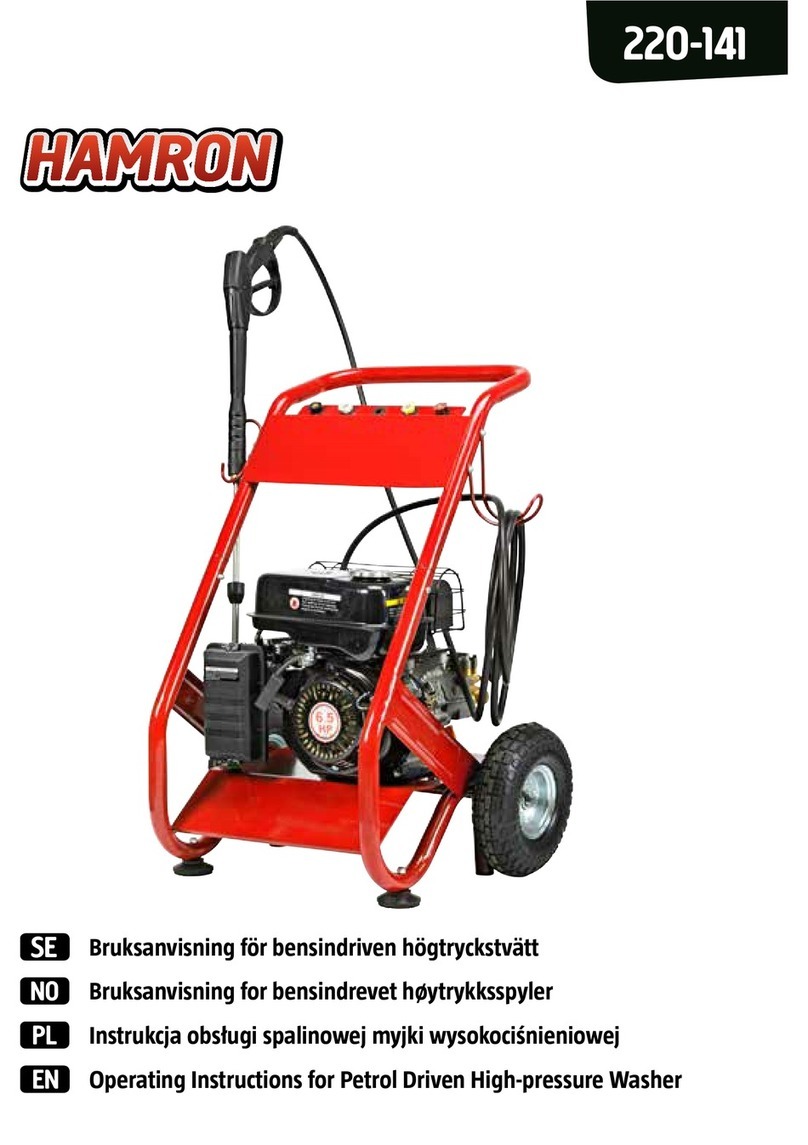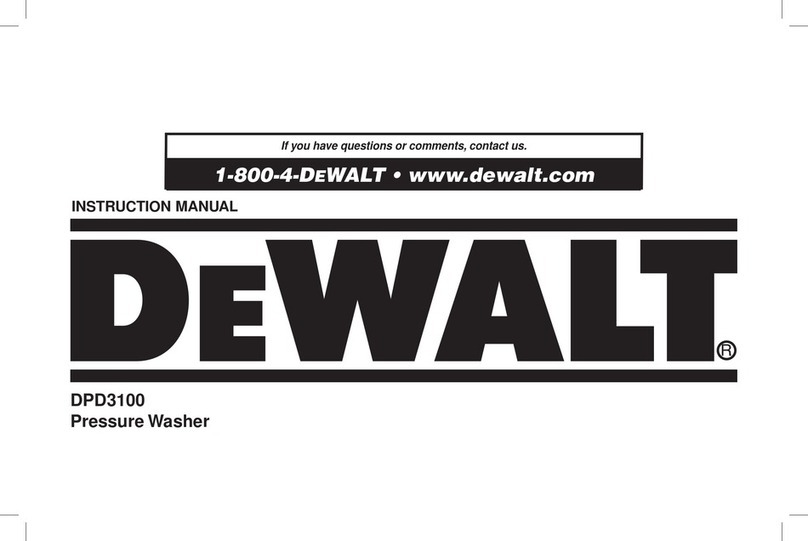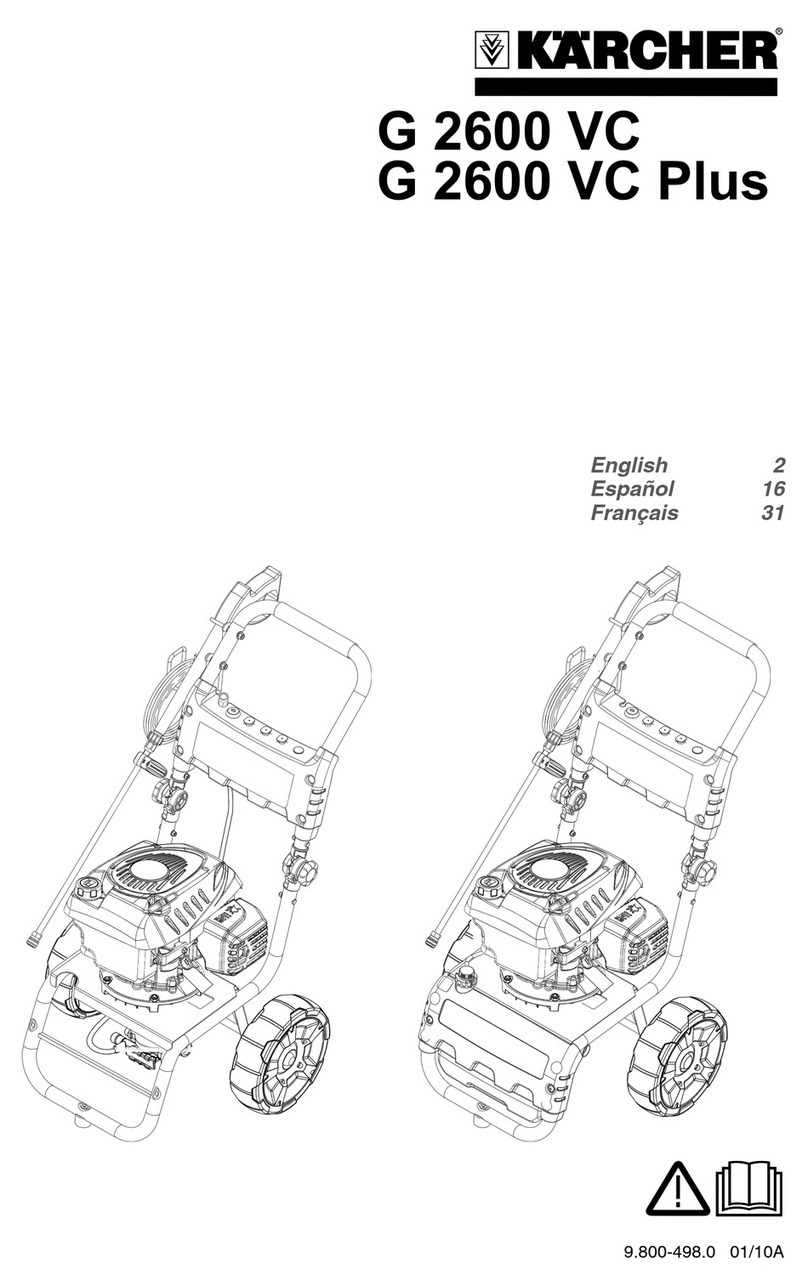
Thank you for purchasing a Sealey product. Manufactured to a high standard this product will, if used according to these instructions and properly
maintained, give you years of trouble free performance.
1. SAFETY INSTRUCTIONS
INSTRUCTIONS FOR:
PRESSURE WASHERS
Model Nos.: PC2275 & PC2285
IMPORTANT: PLEASE READ THESE INSTRUCTIONS CAREFULLY. NOTE THE SAFE OPERATIONAL REQUIREMENTS, WARNINGS AND CAUTIONS.
USE THE PRODUCT CORRECTLY AND WITH CARE FOR THE PURPOSE FOR WHICH IT IS INTENDED. FAILURE TO DO SO MAY CAUSE
DAMAGE OR PERSONAL INJURY AND WILL INVALIDATE THE WARRANTY. PLEASE KEEP INSTRUCTIONS SAFE FOR FUTURE USE.
1.1. ELECTRICAL SAFETY. p WARNING! It is the users responsibility to read, understand and comply with the following:
You must check all electrical equipment and appliances to ensure they are safe before using. You must inspect power supply leads, plugs and all electrical
connections for wear and damage. You must ensure the risk of electric shock is minimised by the installation of appropriate safety devices. An RCCB (Residual
Current Circuit Breaker) should be incorporated in the main distribution board. We also recommend that an RCD (Residual Current Device) is used with all
electrical products. It is particularly important to use an RCD with portable products that are plugged into an electrical supply not protected by an RCCB.
If in doubt consult a qualified electrician. You may obtain a Residual Current Device by contacting your Sealey dealer. You must also read and understand
the following instructions concerning electrical safety.
1.1.1. The Electricity At Work Act 1989 requires all portable electrical appliances, if used on business premises, to be tested by a
qualified electrician, using a Portable Appliance Tester (PAT), at least once a year.
1.1.2. The Health & Safety at Work Act 1974 makes owners of electrical appliances responsible for the safe condition of the appliance
and the safety of the appliance operator. If in any doubt about electrical safety, contact a qualified electrician.
1.1.3. Ensure the insulation on all cables and the product itself is safe before connecting to the mains power supply. See 1.1.1. & 1.1.2.
above and use a Portable Appliance Tester (PAT).
1.1.4. Ensure that cables are always protected against short circuit and overload.
1.1.5. Regularly inspect power supply leads and plugs for wear and damage and all electrical connections to ensure that none is loose.
1.1.6. Important: Ensure the voltage marked on the product is the same as the electrical power supply to be used and check that plugs are fitted
with the correct capacity fuse.
1.1.7. DO NOT pull or carry the powered appliance by its power supply lead.
1.1.8. DO NOT pull power plugs from sockets by the power cable.
1.1.9. DO NOT use worn or damage leads, plugs or connections. Immediately replace or have repaired by a qualified electrician.
1.1.10. NOTE: THIS PRODUCT IS INTENDED FOR USE ON AN INDUSTRIAL 30 AMP SUPPLY WHICH MUST BE INSTALLED
BY A QUALIFIED ELECTRICIAN. It may be possible to operate the washer from a domestic 13 amp outlet under the following conditions:
The mains supply must conform to IEE Wiring Regulations and the spur used to run the washer must not include any socket which
could be used for another appliance. The distance of the socket from the mains distribution board must not exceed 5 metres.
An extension lead must not be used.
1.1.11. Note: Under certain conditions your washer will draw more than 13 amps. Consequently we recommend a 30 amp supply and suggest
that a direct round pin plug/socket is installed by a qualified electrician. In the event
that you choose to use a domestic 13 amp supply and ever have to replace the
non-rewireable 13 amp plug supplied we provide the plug wiring instructions as
follows (UK only - see diagram at right):
Ensure the unit is correctly earthed via a three-pin plug.
a) Connect the GREEN/YELLOW earth wire to the earth terminal E.
b) Connect the BROWN live wire to live terminal L.
c) Connect the BLUE neutral wire to the neutral terminal N.
d) Ensure the plug is fitted with a 13 amp fuse.
After wiring, check there are no bare wires, that all wires have been correctly
connected, that the cable external insulation extends beyond the cable restraint and
that the restraint is tight.
NOTE: IF USED ON A DOMESTIC 13 AMP SUPPLY AND THE FUSE REPEATEDLY BLOWS, CONTACT A QUALIFIED ELECTRICIAN TO
INSTALL A 30 AMP SUPPLY.
Blue
Neutra
l
Yellow & Green
Earth wire
Cable
restrai
Brown
Live
wire
1.2 GENERAL SAFETY
pWARNING! Water and Electricity are dangerous partners. Be extremely cautious and always be aware that this device uses an electric
motor. Always plug into an RCD (See electrical safety 1.1. above).
pWARNING! Always use the washer on a flat, level surface, in a horizontal position. Failure to do so will invalidate your warranty.
pWARNING! Do not operate the washer if damaged. Replace or repair using recommended parts only. Non-authorised parts may
be dangerous and will invalidate your warranty.
4Always be aware of the potential hazards that may occur during use.
4Study the applications and limitations of the washer before use.
4If during operation power failure occurs, turn the unit off and remove the plug for safety reasons.
4Keep the washer in good condition. Regular maintenance will give the best and safest performance.
4Wear adequate protective clothing, goggles and anti-slip rubber soled footwear.
4Ensure the operating area is clear of other people and animals.
8DO NOT connect other appliances to the same outlet.
8DO NOT use in damp or wet weather conditions.
8DO NOT attempt to move the cleaner by pulling on the high pressure hose; use the handle provided.
8DO NOT touch plug with wet hands. To avoid the risk of electrocution keep all connections dry and off the ground.
8DO NOT direct jet against yourself, other persons or animals, electrical equipment or the machine itself.
8DO NOT use the washer if you are tired, under the influence of alcohol, drugs or intoxicating medication.
8DO NOT allow children or untrained persons to operate the washer.
4Keep children and unauthorised persons away from the working area.
4When not in use unplug from the mains power supply and store in a safe dry, childproof area.
PC2275 & PC2285 - 0061 - (3) - 060300
